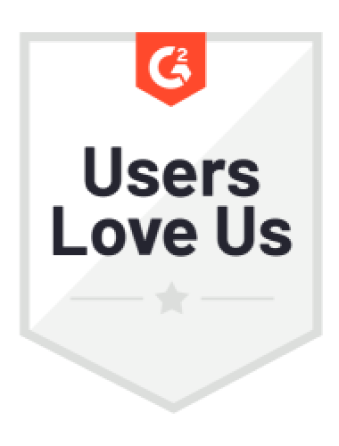What is Data Fabric? Definition and Examples
Discover the transformative power of data fabric.

Understanding the Concept of Data Fabric
Data fabric is an architectural approach that facilitates the seamless integration of data from disparate sources, creating a unified data management framework. It aims to simplify data access and sharing across organizations, regardless of data location or format. With the exponential growth of data and the complexity introduced by cloud computing, data fabric solutions have emerged as critical enablers for businesses seeking agility and efficiency.
The Evolution of Data Fabric
The concept of data fabric has evolved significantly from traditional data management systems. Initially, organizations relied heavily on data warehouses and data lakes, which isolated data within specific platforms. However, as businesses adopted multi-cloud and hybrid environments, the need for a more integrated data strategy became evident.
Data fabric addresses the constraints of these legacy systems by providing a framework that connects data regardless of where it resides. This progressive solution uses advanced technologies such as artificial intelligence, machine learning, and edge computing to enhance data accessibility and intelligence. The shift towards data fabric also reflects a broader trend in data management, where organizations are increasingly prioritizing real-time insights and operational efficiency over traditional batch processing methods.
Key Components of Data Fabric
Several key components comprise an effective data fabric framework. These include:
- Data Integration: The ability to connect and consolidate data from various sources, including databases, cloud services, and on-premises systems.
- Data Governance: Implementing protocols and policies that ensure data quality, compliance, and security across the organization.
- Data Cataloging: Maintaining an organized inventory of data assets, which enables users to discover, understand, and utilize the data effectively.
- Data Orchestration: Automating the workflows needed to manage data movement and processing across the data landscape.
These components work together to create a cohesive ecosystem that facilitates real-time data access and utilization across the enterprise. Furthermore, the integration of metadata management into the data fabric allows organizations to maintain context around their data assets, enhancing the ability to make informed decisions. This metadata-driven approach not only aids in compliance efforts but also empowers data scientists and analysts to derive deeper insights from the data, ultimately driving innovation and competitive advantage.
In addition to these components, the role of user experience cannot be understated. A well-designed data fabric should provide intuitive interfaces and tools that allow users at all levels of the organization to interact with data effortlessly. This democratization of data access fosters a culture of data-driven decision-making, enabling teams to respond swiftly to market changes and customer needs. As data fabric continues to mature, organizations are discovering that it is not just a technological solution, but a strategic framework that aligns with their broader business objectives.
The Role of Data Fabric in Modern Business
In today’s data-driven business environment, organizations must leverage all available data efficiently to gain a competitive edge. Data fabric plays a crucial role in enabling businesses to harness their data assets effectively.
Enhancing Data Accessibility with Data Fabric
One of the primary advantages of data fabric is its ability to enhance data accessibility. By providing a unified platform for connecting various data sources, businesses can ensure that analytical teams have the necessary data at their fingertips without dealing with silos. This capability allows teams to generate insights faster and make data-driven decisions more effectively.
Moreover, data fabric enables self-service analytics, empowering users across all levels of the organization to access and analyze data relevant to their roles. As a result, organizations can foster a culture of data literacy and democratization of information. This shift not only encourages innovation but also enhances collaboration among departments, as employees can share insights and findings in real-time, leading to more cohesive strategies and initiatives.
Data Fabric and Business Decision Making
Effective decision-making relies on the availability of accurate and timely data. Data fabric streamlines this process by ensuring that decision-makers have access to consolidated data insights drawn from multiple sources. This integration reduces the time typically spent on data collection and preparation, allowing businesses to focus on analysis and strategy formulation.
Furthermore, the agility offered by data fabric supports real-time analytics. Businesses can respond to market dynamics and customer feedback promptly, enabling them to pivot strategies and maintain relevance in an ever-changing landscape. The integration of machine learning and artificial intelligence within data fabric systems further enhances this capability, as predictive analytics can identify trends before they become apparent, allowing organizations to stay ahead of the curve and capitalize on emerging opportunities.
Additionally, as companies increasingly embrace remote work and distributed teams, the need for a robust data fabric becomes even more critical. It not only facilitates seamless access to data from various locations but also ensures that security and compliance measures are upheld across all platforms. This is particularly important in industries that handle sensitive information, as data fabric can help maintain data integrity while providing the flexibility necessary for modern business operations.
The Benefits of Implementing Data Fabric
Implementing data fabric can yield numerous benefits that contribute to overall organizational efficiency and effectiveness.
Improved Data Management
Data fabric enhances data management processes by providing a clear framework for collecting, storing, and utilizing data. The integration of data across various platforms means that IT teams spend less time managing data pipelines and more time focusing on innovation and strategy. This improved management becomes a competitive advantage, as organizations can more quickly adapt to technological advances and market demands. Furthermore, with a unified view of data, stakeholders can make informed decisions based on real-time insights, leading to improved operational efficiency and reduced time-to-market for new products or services.
Additionally, the flexibility of data fabric allows organizations to scale their data operations seamlessly. As businesses grow and evolve, their data needs change, and a data fabric architecture can easily accommodate new data sources and types without requiring significant overhauls. This adaptability not only streamlines data workflows but also empowers teams to leverage advanced analytics and machine learning, unlocking deeper insights that drive innovation and growth.
Enhanced Data Security
As organizations manage vast amounts of data, security becomes a paramount concern. Data fabric incorporates robust security measures to protect sensitive data, ensuring compliance with regulatory standards. By establishing a comprehensive data governance strategy, organizations can maintain oversight and control over their data assets, mitigating the risk of data breaches and unauthorized access. Moreover, data fabric solutions often include advanced encryption techniques and access controls, which further bolster the security posture of the organization.
In an era where cyber threats are increasingly sophisticated, having a proactive approach to data security is essential. Data fabric not only helps in identifying vulnerabilities but also facilitates rapid incident response through real-time monitoring and alerts. This proactive stance not only protects valuable data but also fosters trust with customers and partners, as organizations demonstrate their commitment to safeguarding sensitive information. By prioritizing data security within the framework of a data fabric, organizations can build a resilient data ecosystem that supports long-term success and stability.
Challenges in Data Fabric Implementation
Despite its advantages, implementing a data fabric solution is not without challenges. Organizations must anticipate and address several issues that may arise during the integration process.
Overcoming Integration Issues
The integration of diverse data sources often presents technical challenges. Legacy systems may not be compatible with modern data fabric technologies, leading to integration hurdles. Organizations must invest in middleware solutions and robust APIs to ensure that data flows smoothly between various systems.
Moreover, training staff to leverage new data fabric tools effectively is essential. A lack of skills or understanding can hinder successful implementation and lead to underutilization of the assets available. This training should not only focus on the technical aspects but also on fostering a culture of data literacy within the organization. By empowering employees with the knowledge and skills to interpret and utilize data effectively, organizations can maximize the benefits of their data fabric initiatives.
Addressing Data Governance Concerns
Data governance is a critical aspect of any data strategy, and implementing data fabric raises specific governance challenges. Organizations must establish clear policies and practices that guide data usage while ensuring compliance with regulations such as GDPR and CCPA. The establishment of governance frameworks that balance agility and oversight is essential to maintain data integrity and trust.
Additionally, organizations need to consider the implications of data ownership and stewardship in a data fabric environment. As data becomes more accessible across various departments, the lines of responsibility can blur, leading to potential conflicts or misuse. Developing a clear data stewardship model, where roles and responsibilities are well-defined, can help mitigate these risks. This model should also include regular audits and assessments to ensure adherence to governance policies, thereby fostering a culture of accountability and transparency in data management practices.
The Future of Data Fabric
The landscape of data management continues to evolve, and data fabric solutions are at the forefront of this transformation. As organizations increasingly rely on data to enhance operations, the importance of having a comprehensive data strategy cannot be overstated.
Predicted Trends in Data Fabric Technology
Looking ahead, we can expect several trends to shape the development of data fabric technology. Increasing adoption of artificial intelligence will enhance data processing capabilities, enabling organizations to derive insights from their data more effectively. Additionally, as cloud services continue to mature, data fabric solutions will likely become more integrated with other cloud-native applications, fostering seamless collaboration across platforms.
Preparing for a Data Fabric-Driven Future
Organizations must proactively prepare for a data fabric-driven future by investing in the right technologies and cultivating a culture of data empowerment. This preparation involves not only adopting new tools but also ensuring that teams are equipped with the skills needed to leverage data effectively. Embracing a data fabric strategy positions businesses to thrive in an increasingly complex data environment.
As you consider the future of data management and the integral role of data fabric in your business strategy, CastorDoc stands ready to elevate your organization's data capabilities. With its advanced governance, cataloging, and lineage features, coupled with a user-friendly AI assistant, CastorDoc is the powerful tool you need to enable self-service analytics and empower your teams. Embrace the ease of natural language interactions and the control over your data governance lifecycle that CastorDoc offers. Don't miss the opportunity to transform your data management and drive informed decision-making across your enterprise. Try CastorDoc today and unlock the full potential of your data.
You might also like
Get in Touch to Learn More



“[I like] The easy to use interface and the speed of finding the relevant assets that you're looking for in your database. I also really enjoy the score given to each table, [which] lets you prioritize the results of your queries by how often certain data is used.” - Michal P., Head of Data




.png)
%202.png)

%202.png)

%202.png)
%202.png)
%202.png)

%202.png)


%202.png)

%202.png)


.png)

